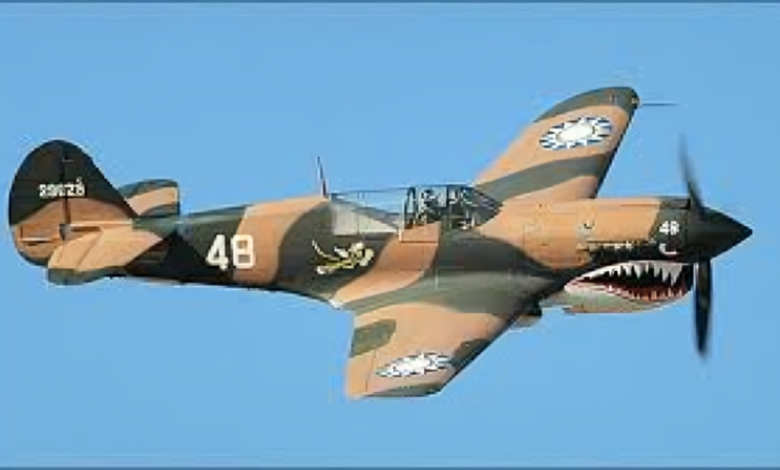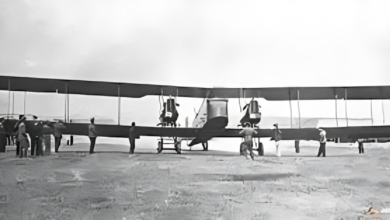Exploring the Legacy of the Curtis P40 A WWII Icon

The Curtis P40, a stalwart of the skies during World War II, remains one of aviation’s most iconic fighters. With its distinctive shark-mouth nose art and rugged design, this aircraft captured the imagination of pilots and enthusiasts alike. The P40 was more than just a plane; it became a symbol of resilience in the face of overwhelming odds. As we delve into its fascinating history, remarkable features, and enduring legacy, we’ll uncover why the Curtis P40 continues to hold a special place in both military history and popular culture. Buckle up as we take flight through time!
History of the Curtis P40
The history of the Curtis P40 is rooted in innovation and necessity. Developed by Curtiss Aeroplane and Motor Company, this fighter aircraft first took to the skies in 1938. Designed for versatility, it quickly became a favorite among pilots.
When World War II erupted, the P40 was already in production. The airplane was notable for its distinctive shark-faced nose art, which became iconic during the war. It served multiple roles including fighter escort and ground attack.
Despite its initial struggles against more advanced enemy fighters, the P40 earned respect on various fronts. From North Africa to China, it proved effective in dogfights and played a critical role alongside Allied forces.
As combat evolved during WWII, so did perceptions of this sturdy aircraft. It showcased an enduring spirit that resonated with both pilots and aviation enthusiasts alike throughout its operational years.
Design and Features of the Curtis P40
The Curtis P40 is a striking aircraft, known for its rugged design and impressive features. Its sleek silhouette combined with an aggressive nose gives it an imposing presence in the skies.
Equipped with a powerful Allison V-1710 engine, the P40 could reach speeds of up to 360 mph. This made it competitive during dogfights against enemy planes.
One of its defining characteristics was the distinctive shark mouth painted on its nose. This iconic emblem became synonymous with many squadrons, instilling fear in adversaries while boosting pilot morale.
The airframe featured a sturdy build, allowing it to withstand considerable damage and keep flying when other planes faltered. With six .50 caliber machine guns mounted in the wings, firepower was never lacking.
Additionally, the P40’s landing gear proved reliable even on rough terrain—essential for operations across diverse battlefields. These features contributed significantly to its reputation as a versatile fighter throughout WWII.
Notable Battles and Pilots of the Curtis P40
The Curtis P40 played a significant role in several key battles during WWII. Its rugged design and adaptability made it a favorite among pilots fighting across various theaters of war.
One notable engagement was the Battle of Midway, where P40s were instrumental in defending against Japanese attacks. Their speed and maneuverability allowed them to take on enemy aircraft effectively.
Famed pilot Claire Lee Chennault became synonymous with the P40 while leading the Flying Tigers in China. His tactics combined aggressive dogfighting skills with strategic insight, making him one of the most celebrated figures associated with this fighter plane.
Another remarkable pilot, Lt. Charles Older, gained recognition for his bravery flying the P40 during fierce aerial combat over North Africa. His contributions helped solidify the reputation of this legendary aircraft as an essential component of Allied air power throughout the war.
The Legacy of the Curtis P40
The Curtis P40 has left an indelible mark on aviation history. Its rugged design and adaptability made it a favorite among pilots during World War II.
Beyond its impressive battlefield performance, the aircraft symbolizes resilience and ingenuity in tumultuous times. Many stories of heroism are tied to this fighter plane, showcasing the bravery of those who flew it.
Even decades after the war, the P40 remains a treasured subject for enthusiasts and historians alike. Airshows often feature restored models, allowing new generations to appreciate its storied past.
Museums around the globe exhibit artifacts related to the P40, ensuring that its contributions are not forgotten. The legacy continues as educational programs highlight both engineering advancements and personal narratives connected with this iconic aircraft.
Impact on Aviation Technology
The Curtis P40 made a significant mark on aviation technology during its time. Its design featured a sleek, aerodynamic form that contributed to improved performance in the skies.
Engine advancements were pivotal for the P40. It utilized powerful liquid-cooled engines that enhanced speed and agility, setting a standard for future fighter aircraft.
The airframe construction also introduced innovative materials and techniques. This allowed for better durability while keeping weight manageable—a critical balance in aerial combat.
Moreover, the operational strategies developed around the Curtis P40 influenced how military forces approached air warfare. Tactics honed by pilots flying this aircraft became foundational lessons for generations of aviators.
Even after WWII, elements of its design continued to inspire aerospace engineers. The legacy of the Curtis P40 extends beyond history books; it shaped modern aviation trends and technologies still relevant today.
Preservation and Commemoration of the Curtis P40
The Curtis P40 holds a special place in aviation history, and many enthusiasts work tirelessly to preserve its legacy. Various museums around the world showcase restored models, allowing visitors to witness this WWII icon up close.
Airshows frequently feature the P40, where pilots demonstrate its agility and performance. These events keep the spirit of the aircraft alive while educating new generations about its significance.
Additionally, numerous organizations focus on maintaining original P40s. They ensure that these aircraft remain operational for future admirers.
Commemorative events are organized regularly to honor those who flew and maintained this legendary fighter plane during wartime. Such gatherings foster camaraderie among veterans and aviation lovers alike.
Through dedicated efforts, memories associated with the Curtis P40 continue to thrive, inspiring countless individuals passionate about military aviation history.
FAQs
What is the maximum speed of the Curtis P40?
The Curtis P40 could reach speeds of about 360 mph. This made it competitive during its time, especially in dogfights.
How many variants of the Curtis P40 were produced?
There were several variants produced, including the most notable models like the P-40E and P-40M. Each version brought improvements to performance and armament.
Did any famous pilots fly the Curtis P40?
Yes, legendary aviators such as Claire Chennault and his Flying Tigers famously piloted this aircraft. Their missions helped cement its reputation during WWII.
Why was the Curtis P40 so significant?
Its rugged design allowed for adaptability in various combat situations. It became a vital asset for Allied forces around the globe.
Are there still operational Curtis P40 planes today?
A limited number remain airworthy, thanks to dedicated restoration efforts from aviation enthusiasts and museums worldwide.
Conclusion
The Curtis P40 stands tall as a symbol of resilience and innovation during World War II. Its robust design and versatility allowed it to adapt to various combat scenarios, making it a reliable choice for pilots in many theaters of war. The stories of the brave pilots who flew these aircraft resonate through history, showcasing their courage and skill.
As we reflect on the legacy of the Curtis P40, we see its influence extending beyond its operational years. It not only played a crucial role in shaping aerial warfare tactics but also paved the way for advancements in aviation technology that followed.
Today, enthusiasts work tirelessly to preserve this iconic aircraft, ensuring that future generations can appreciate its historical significance. From airshows to museums, the spirit of the Curtis P40 continues to inspire awe.
In understanding its past, we gain insight into not just an airplane but into an era marked by bravery and innovation. The Curtis P40 remains etched in our collective memory—a testament to those who took flight against adversity.




